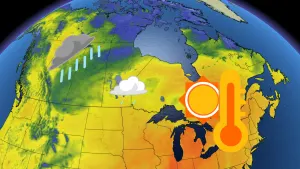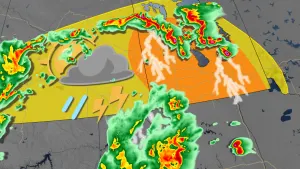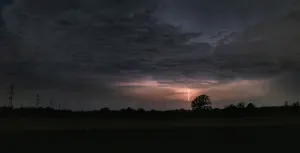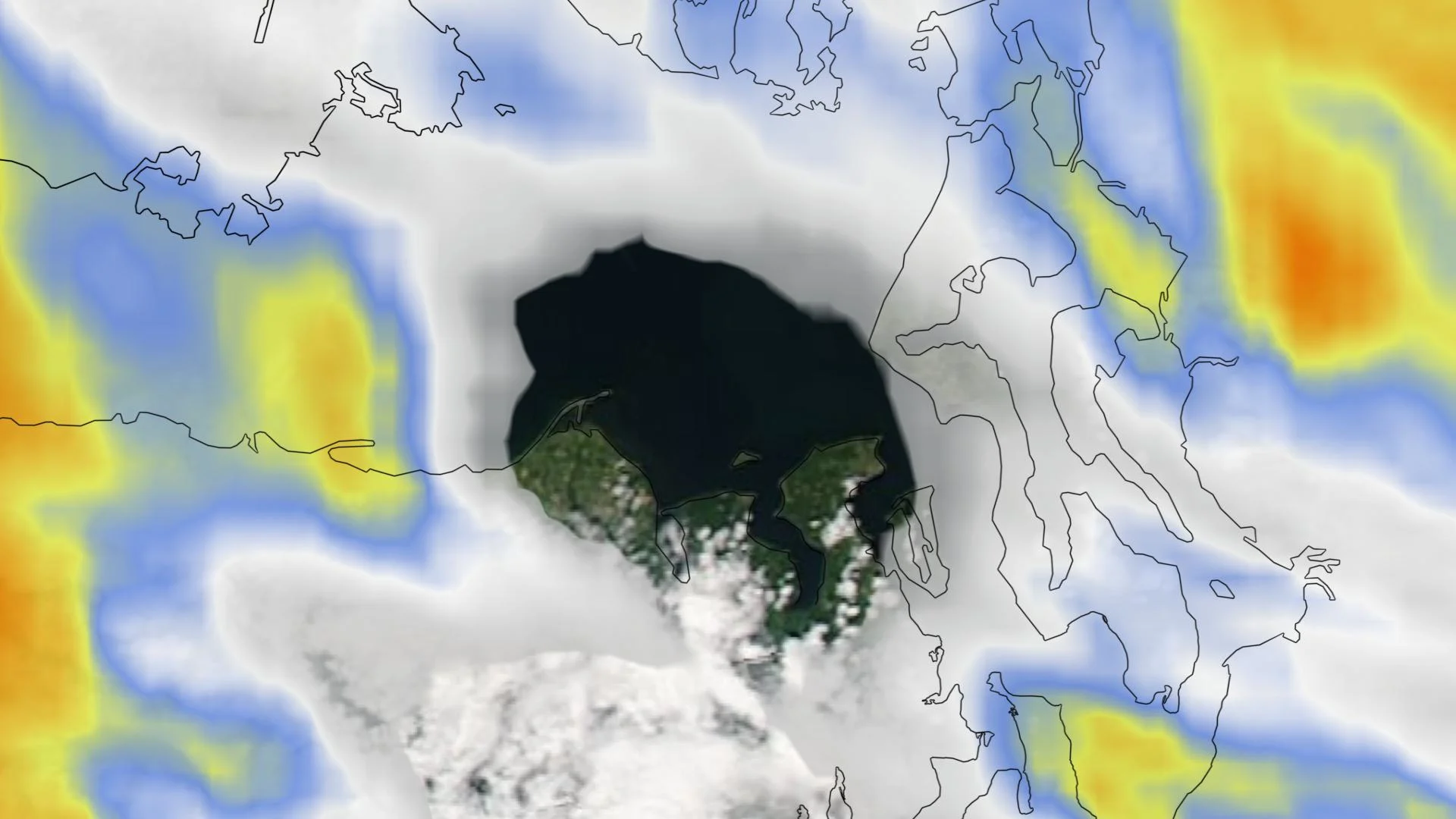
Meet the 'Great Blue Hole', this sunny Canadian secret explained
Local pilots have noticed that a certain patch of blue sky remains clear even when frontal systems track through.
How's this for a microclimate?
A formidable frontal system sliced across the B.C. South Coast on Tuesday, but in typical West Coast fashion, the resulting weather varied over razor-thin distances.
For years, locals have noticed a peculiar patch of blue sky that stays clear even when frontal systems track through the area. Sometimes, when the forecast tends to be filled with clouds, this section of the sky often reveals itself over Greater Victoria and the surrounding waters.
Local pilots have coined it the 'Great Blue Hole,' but what creates such a persistent, small scale feature?
You might have heard of the 'rain shadow' effect before. Those who reside on eastern and southern Vancouver Island know the term, as it leaves an indelible mark on the local weather conditions.

Moist frontal systems approach the coast from the west, following the natural progression of the upper-level winds. Much of Greater Victoria is in the shadow of the mighty Olympic Mountains and being on the leeward side has its perks, noticeably much less rainfall.
The winds aloft on Tuesday peaked at over 75 km/h, increasing the impacts of the sinking air on the leeward side of the Olympic Mountain Range. The pockets of sinking air were also analyzed using satellite and high-resolution computer modelling, indicating the region was primed for some stability.
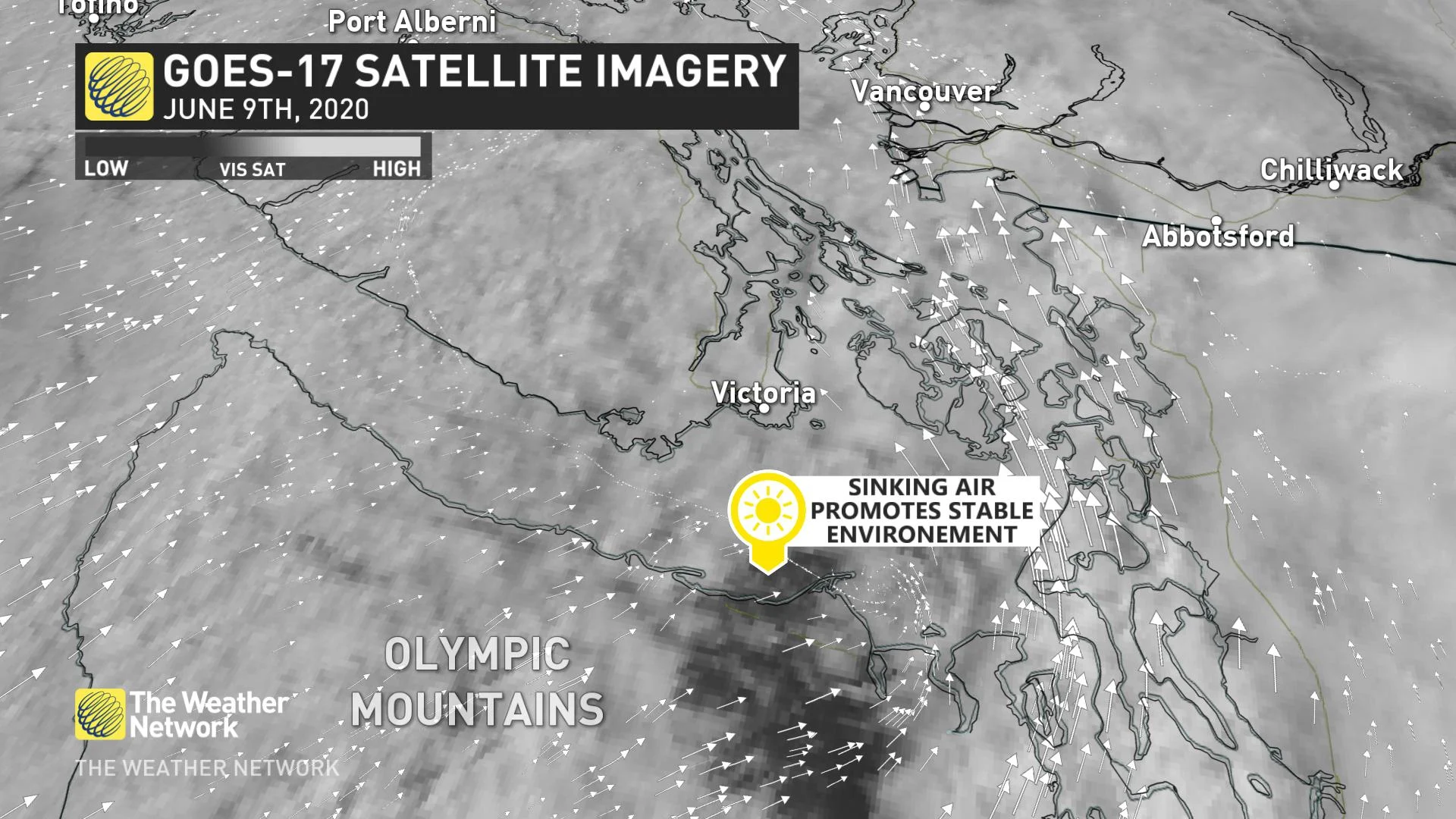
Where stability in the atmosphere was at a local maximum, the clouds cleared and revealed the beautiful blue sky. Prominent downsloping winds dry and warm the parcels of descending air, which causes communities in Washington State to accumulate trace amounts of rain with the prevailing winds that blow in from the southwest.
SEE ALSO: Canada's first tornado of 2020 spotted on Vancouver Island
If you want clouds and precipitation, you need rising parcels of air that eventually reach the saturation point. The invisible water vapour ultimately condenses into our familiar cloudscapes.
While the mountainous terrain of Vancouver Island can record over 5,000 mm of precipitation in a calendar year, communities near the epicentre of the rain shadow barely tally 400-500 mm. This undulating pattern of rising, sinking and rising air occurs across the South Coast as air flows across the local mountain ranges and creates wildly different types of weather.
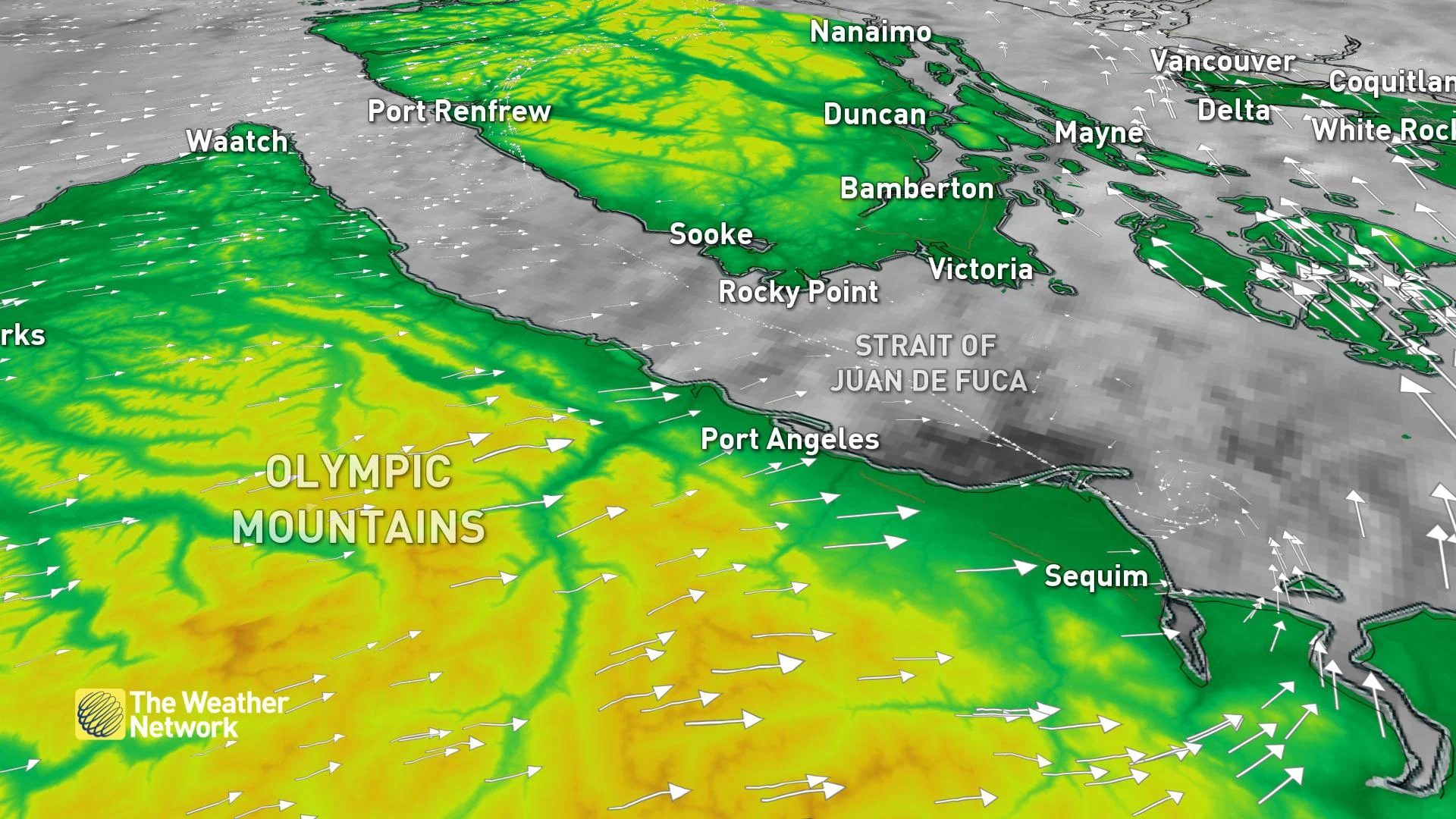
Topographic map highlighting the incredibly rugged terrain southwest of Victoria, B.C.
The strength of the frontal system and speed and orientation of the upper-level winds all appear to play a role in how pronounced the rain shadow effect is and consequently, determines whether or not the 'Great Blue Hole' will make an appearance.








